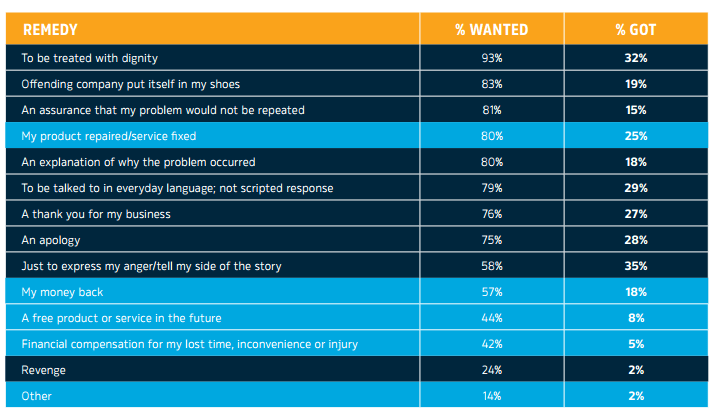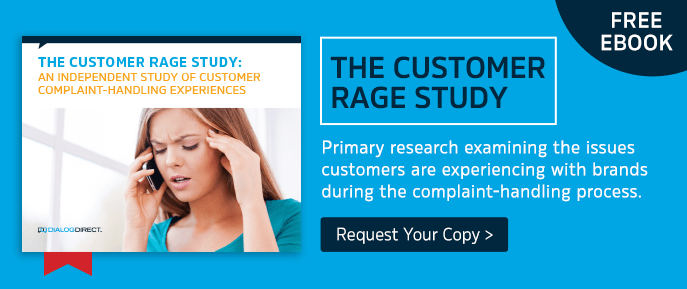The following is a guest blog written by Mary Murcott, President of the Customer Experience Institute at Dialog Direct. Learn more about Dialog Direct by visiting their website.
There are only two ways to build a business: retain existing customers and acquire new ones. Great customer service and satisfaction are the key to both because most customers are acquired through positive word of mouth. So you would expect most companies to be fully focused on providing exceptional customer service and experiences, but that doesn’t seem to be the case.
Every two years, Dialog Direct partners with CCMC (customer care measurement & consulting), the W.P Carey School of Business at Arizona State University and the Center for Services Leadership to conduct the Customer Rage Study to gauge how customers view companies and how retailers and etailers can address areas of weakness that cause them to lose customers. The study identifies customer problems and addresses the nagging question:
Why are customer service and satisfaction still declining, despite their paramount importance and bottom line impact?
The study revealed that, in 2015, $202 billion were at risk due to customer problems with products/services. Key takeaways:
– 66% of customers with problems experienced rage
– 60% identified wasted time as the biggest damage
– Only 35% were satisfied with their first contact
– Only 14% got problem resolved upon first contact
– It takes an average of 4.2 contacts to satisfy the complainant
– Nearly one in four wants revenge
Fortunately…
– If they become satisfied, 48% of customers would still recommend the brand
– When providing both monetary and non-monetary remedies, satisfaction almost doubled from 37% to 73%
What are the implications?
There is nothing more damaging to a company or brand than negative word of mouth. And customers are far more likely to complain when unhappy than to express joy when happy. In fact, the 2015 study revealed that customers are twice as likely to express dissatisfaction than satisfaction. So it’s far easier to diminish a brand than it is to build one.
The study revealed that more than half of American households experienced a product/service problem during 2015. And 63% said they received nothing for their trouble. As a result, it is likely that companies are losing more customers than they are gaining, a prescription for declining sales and profits. Ironically, companies’ customer care programs appear to be actually doing the opposite of what they’re supposed to do.
Many companies aren’t meeting complaining customers’ expectations
The following findings from the study help to explain why:

It isn’t that companies don’t have customer complaint solutions. The problem is that they’re not always effective. For example, the message that annoys consumers the most is all too common: “Your call is important to us; please continue to hold.” Other weak links:
– Complicated automated response menus
– Lack of customer care agent empowerment
– Understaffing so it takes longer to respond to customer
Want to know more about the study and how you can solve your customer care conundrum? To hear more about this topic and others like it, and for more information about Dialog Direct, join us at Customer Response Summit Austin (Sept. 18-20, 2016).




























































 TELUS Digital
TELUS Digital ibex delivers innovative BPO, smart digital marketing, online acquisition technology, and end-to-end customer engagement solutions to help companies acquire, engage and retain customers. ibex leverages its diverse global team and industry-leading technology, including its AI-powered ibex Wave iX solutions suite, to drive superior CX for top brands across retail, e-commerce, healthcare, fintech, utilities and logistics.
ibex delivers innovative BPO, smart digital marketing, online acquisition technology, and end-to-end customer engagement solutions to help companies acquire, engage and retain customers. ibex leverages its diverse global team and industry-leading technology, including its AI-powered ibex Wave iX solutions suite, to drive superior CX for top brands across retail, e-commerce, healthcare, fintech, utilities and logistics.






















 Trista Miller
Trista Miller




























